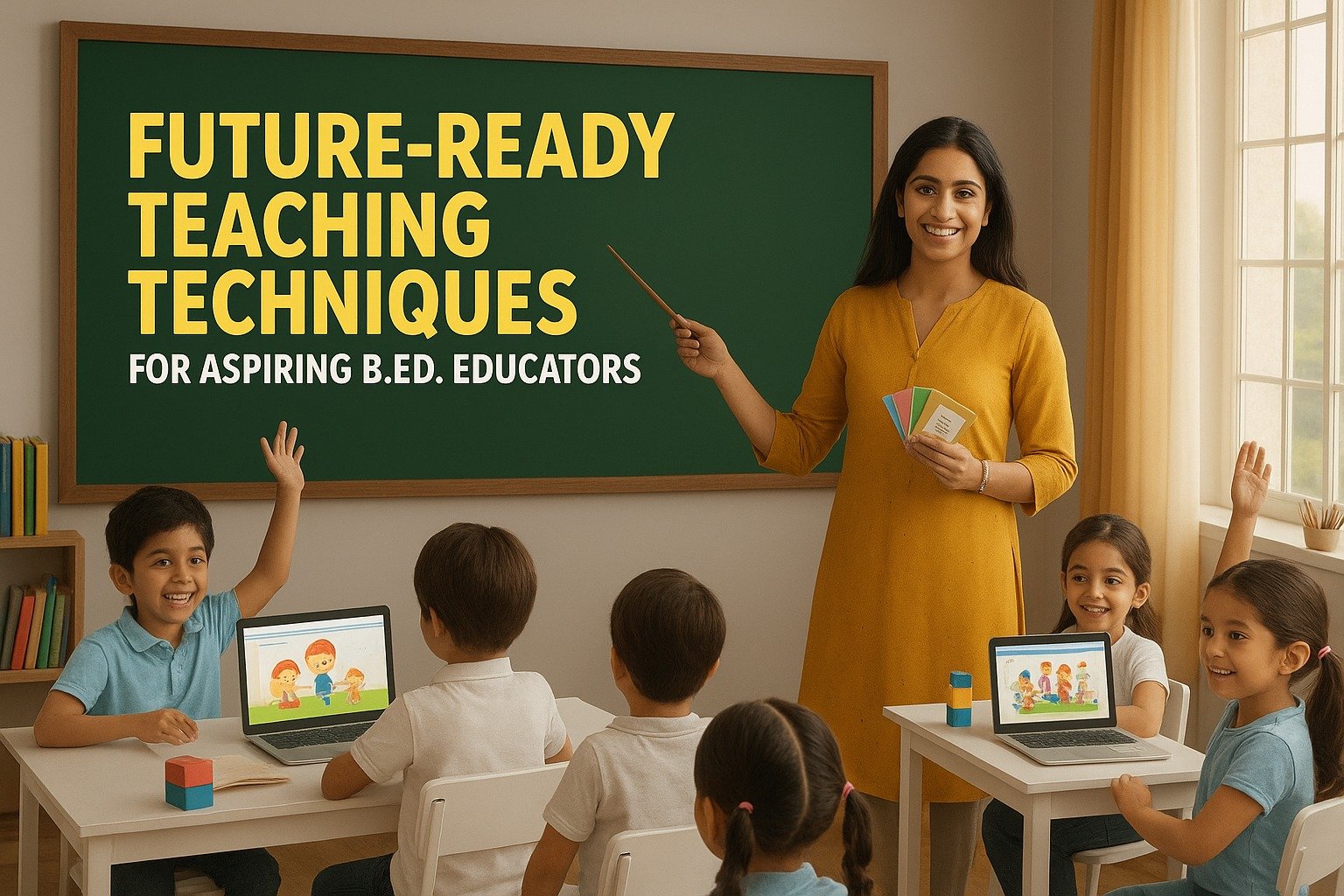
Teaching today is not confined to chalk and board—it’s about igniting curiosity, building confidence, and preparing students for real-world challenges. For B.Ed students, mastering innovative teaching methods is essential to become impactful educators. Below are some effective methods with expanded, practical examples that bring the concepts to life.
“Learning by doing” ensures students connect theory with practice. For example, instead of only teaching the concept of photosynthesis through diagrams, a science teacher might take students outdoors to observe plants, set up a small experiment with sunlight and shade, and record growth differences. Similarly, in social studies, students could role-play as members of a parliament to understand democratic processes. These real-world experiences help learners retain knowledge longer and develop critical thinking skills.
In the flipped classroom model, students first explore lessons outside the classroom. For example, before a mathematics class, the teacher may share a short video explaining the basics of algebra. When students return, classroom time is used to solve equations together, discuss common mistakes, and work on problem sets in groups. This way, instead of passively listening, students arrive prepared, making class hours more interactive and solution-focused.
Group learning builds teamwork and communication skills. For instance, in an English class, students might work in small groups to create a short play based on a story. Each student contributes—some write dialogues, others act, while some design stage props. This ensures participation from everyone while teaching literature, creativity, and leadership. Such collaboration mirrors real-world teamwork, preparing students for future workplaces.
Technology brings learning to life. A history teacher could use an interactive timeline app to showcase major world events, linking each with videos or images. In science, simulations of chemical reactions on smart boards allow students to visualize experiments that may be too dangerous to conduct in class. Educational apps like Kahoot or Quizizz can be used for quick quizzes, making even assessments fun. By mastering ICT, B.Ed students ensure lessons are engaging, relevant, and student-friendly.
This method transforms students into curious explorers. For example, in geography, instead of directly explaining why deserts are hot during the day and cold at night, a teacher might ask students to research temperature variations, study graphs, and debate possible reasons. Similarly, in science, students could be asked, “Why does ice float on water?” and then guided to experiment and discover the principle of density. Such guided inquiry builds independent thinking and problem-solving abilities.
Learning becomes exciting when it feels like a game. For example, a history teacher could divide the class into teams for a “History Quiz Battle,” where correct answers earn badges or points. In mathematics, teachers could use a leaderboard to track daily problem-solving challenges, with small rewards for consistency. Even storytelling can be gamified—for example, asking students to “unlock” the next chapter of a story by solving puzzles. This playful approach keeps learners motivated and fully engaged.
Blended learning combines classroom teaching with digital resources. For example, after teaching a lesson on environmental pollution, a teacher might assign an online documentary for students to watch at home. The next day, the class could discuss real-world pollution problems in their city and propose practical solutions. This approach balances the strengths of personal interaction and online resources, allowing teachers to track progress and personalize learning.
PBL helps students apply knowledge in real-world contexts. For example, a project on “Sustainable Cities” could require students to research eco-friendly energy sources, design model houses with solar panels, and present solutions for waste management. Similarly, in language classes, students might create a school magazine, handling everything from writing articles to designing layouts. These projects encourage teamwork, creativity, and practical application of theory, making learning deeply meaningful.
The future of education belongs to teachers who can inspire, innovate, and adapt. For B.Ed students, learning these techniques is more than academic training—it’s preparation for shaping the next generation. Whether through hands-on projects, digital tools, or collaborative activities, these methods transform classrooms into spaces of discovery and growth.
In essence, great teachers don’t just teach—they create experiences. By mastering these future-ready teaching techniques, B.Ed students can step confidently into the teaching profession and make a lasting impact on learners’ lives.✨